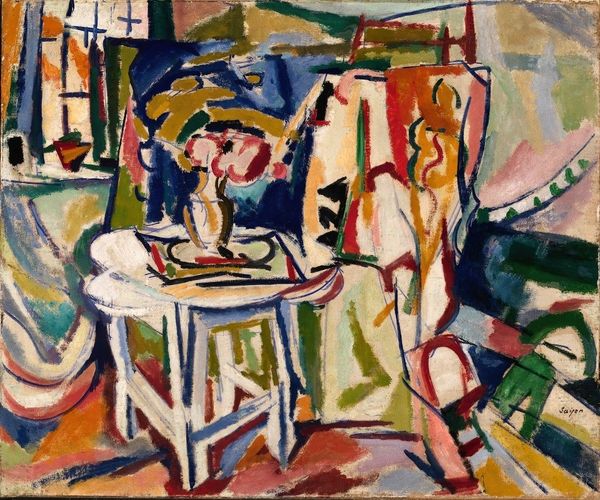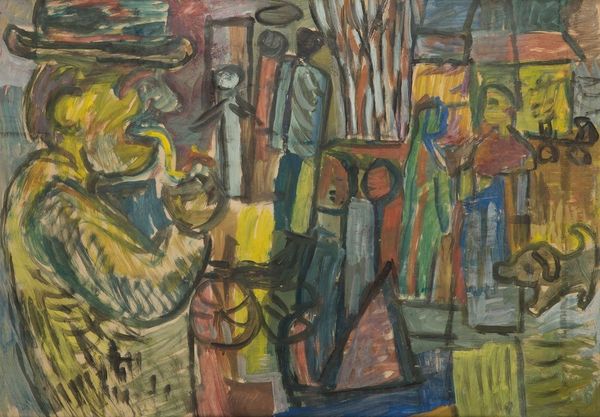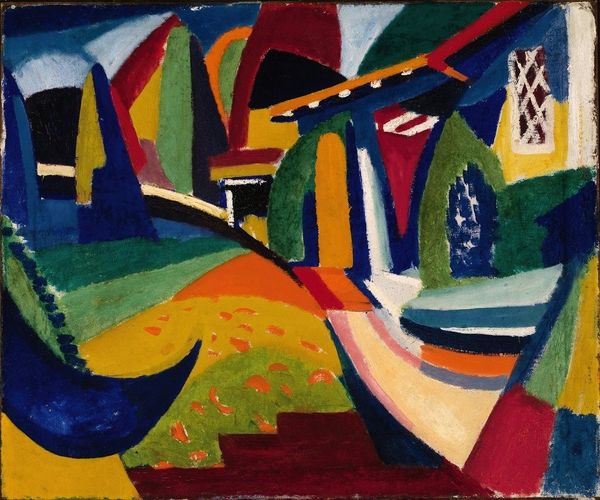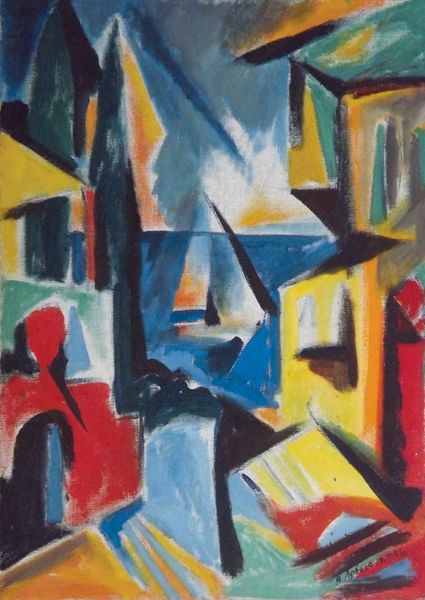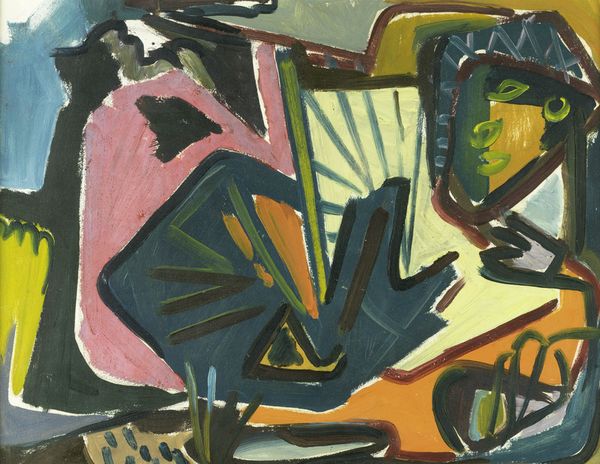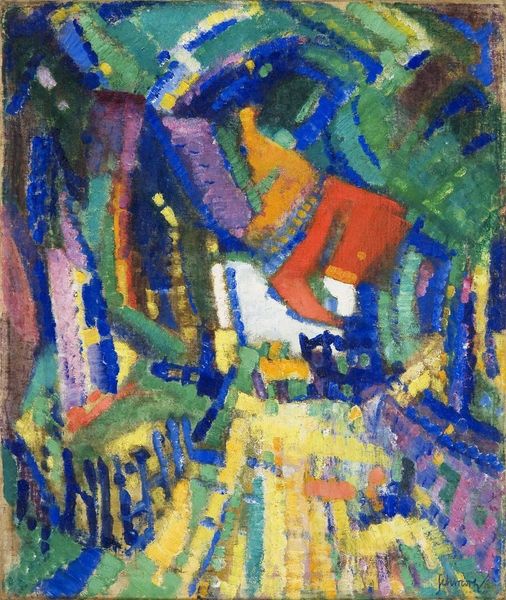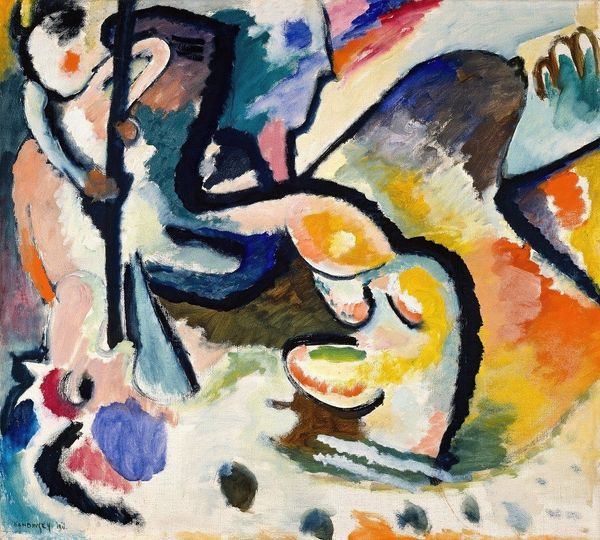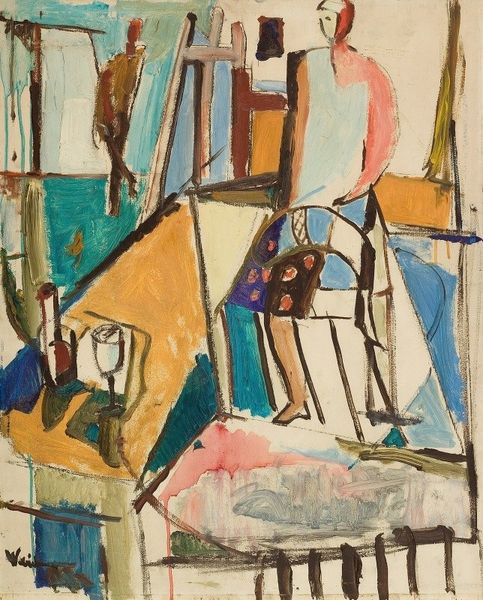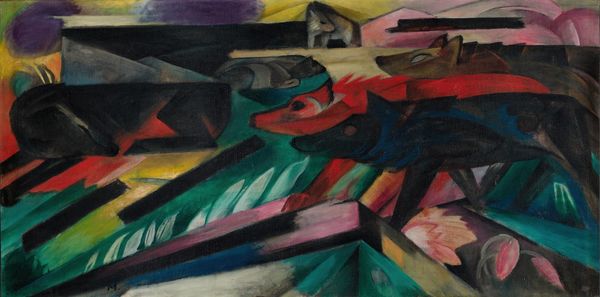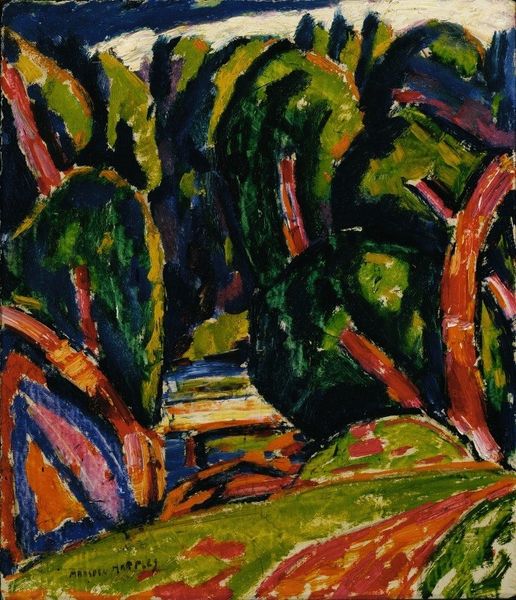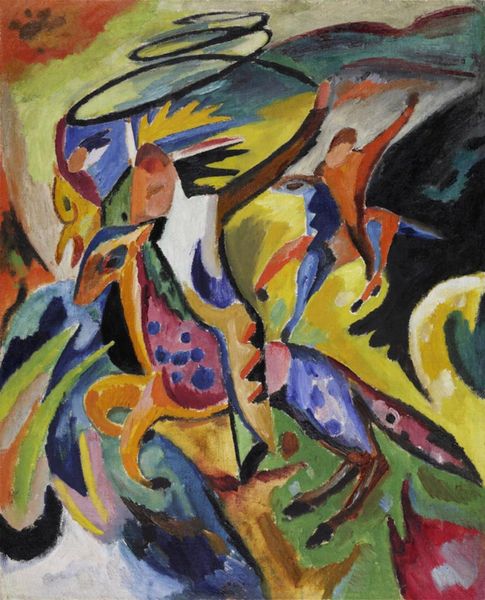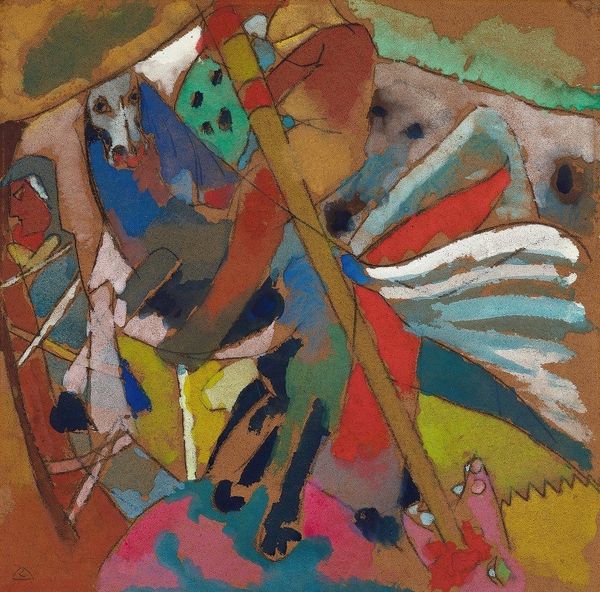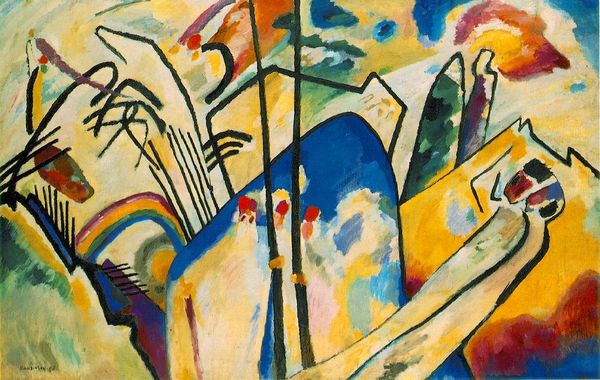
Copyright: Public Domain: Artvee
Curator: Henry Lyman Saÿen's "Fugue," created in 1915. It’s an oil-on-canvas abstraction that flirts with landscape elements. What strikes you initially? Editor: A vibrancy! It’s almost dizzying how the forms overlap. Is that supposed to be a house and foliage broken apart and recombined? I'm seeing so many embedded visual themes right off the bat. Curator: Exactly. Saÿen was fascinated with dismantling pictorial conventions. Think about the context: It's 1915, Europe is embroiled in war, and traditional structures are collapsing everywhere. You can sense that instability in the fractured application of color and form, perhaps reflective of the societal trauma of the time. He almost methodically breaks down the picture plane to its very core. Editor: It certainly reflects a world in turmoil! Notice how the colors clash yet create harmony; what kind of tradition is being called upon here? The Fauvist use of non-naturalistic color surely alludes to Matisse and Derain, but here, color seems almost structurally important. They build up space. Curator: Yes, I think you’re correct. The artist trained in Paris at Academie Julian. The Fauves use of pure color was certainly an influence, but I also think he's examining how form and process, not just color alone, create new emotional resonances within abstraction itself. Consider his interest in weaving and textiles that speak to formalist abstraction as well, Editor: The weaving adds complexity! Looking at how everything converges. Consider that red, circular motif at the center. It reminds me of ancient sun symbols—a primal source of energy, which has carried weight across civilizations for millennia. Is the 'house' cowering from it or celebrating it? The imagery could have psychological undercurrents reflecting anxiety and hope. Curator: The anxiety of rapid modernization possibly. I'm inclined to see the 'house' as another element subject to disintegration, just as our cultural anchors might be in periods of extreme uncertainty. His engagement in industrial design and printing informs his overall artistic practice and suggests that our collective experience relies on industrial innovation Editor: Right. Each section here—house, sun, trees—possesses emotional symbolism in a time of societal shift. Seeing them dissolve reveals that symbolism's lasting nature through abstraction. Fascinating how material application intertwines with imagery! Curator: Absolutely. It underlines the idea of production, of how meaning emerges from this complex relationship between raw pigment and skilled human agency. I think what Saÿen’s constructed gives rise to modern abstraction by connecting these different planes and patterns! Editor: Agreed. Looking at it this way definitely deepens our understanding of its lasting power as both a reflection of then, and a visual treasure now.
Comments
No comments
Be the first to comment and join the conversation on the ultimate creative platform.
